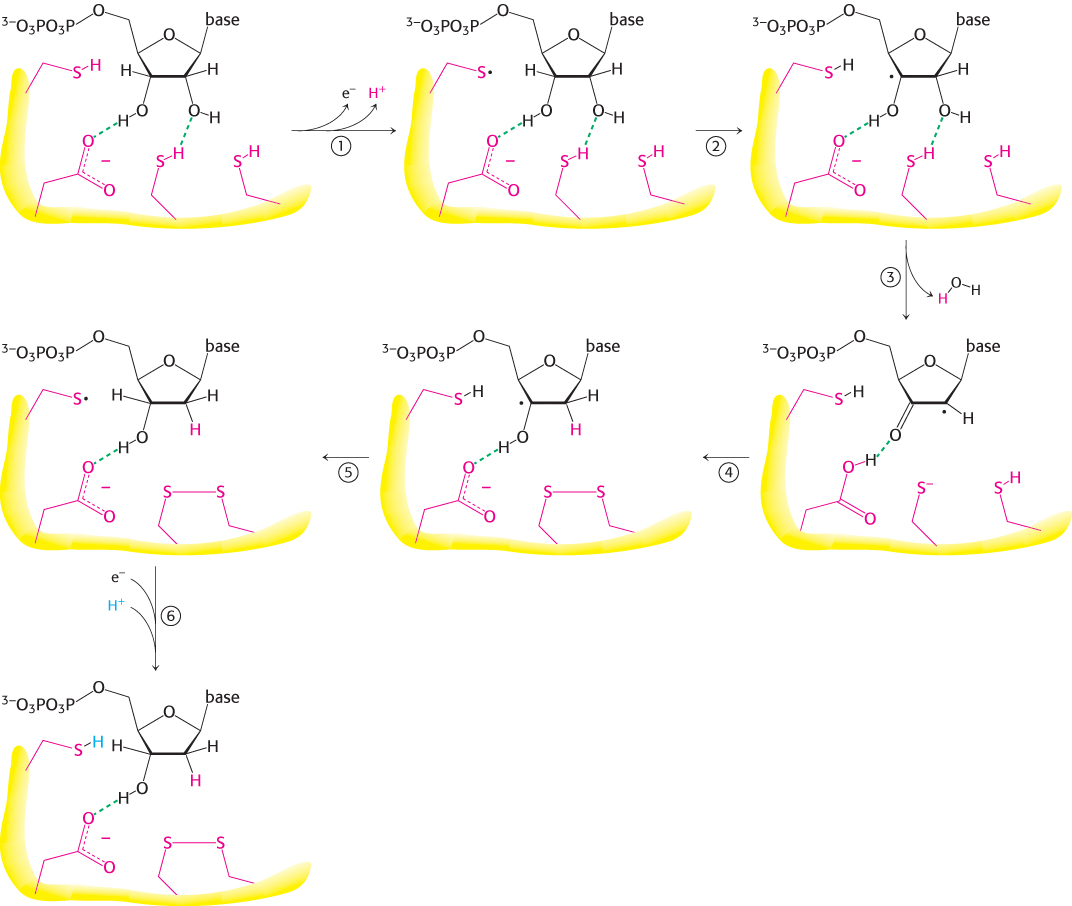
Ribonucleotide reductase mechanism. (1) An electron is transferred from a cysteine residue on R1 to a tyrosine radical on R2, generating a highly reactive cysteine thiyl radical. (2) This radical abstracts a hydrogen atom from C- C- C- C-